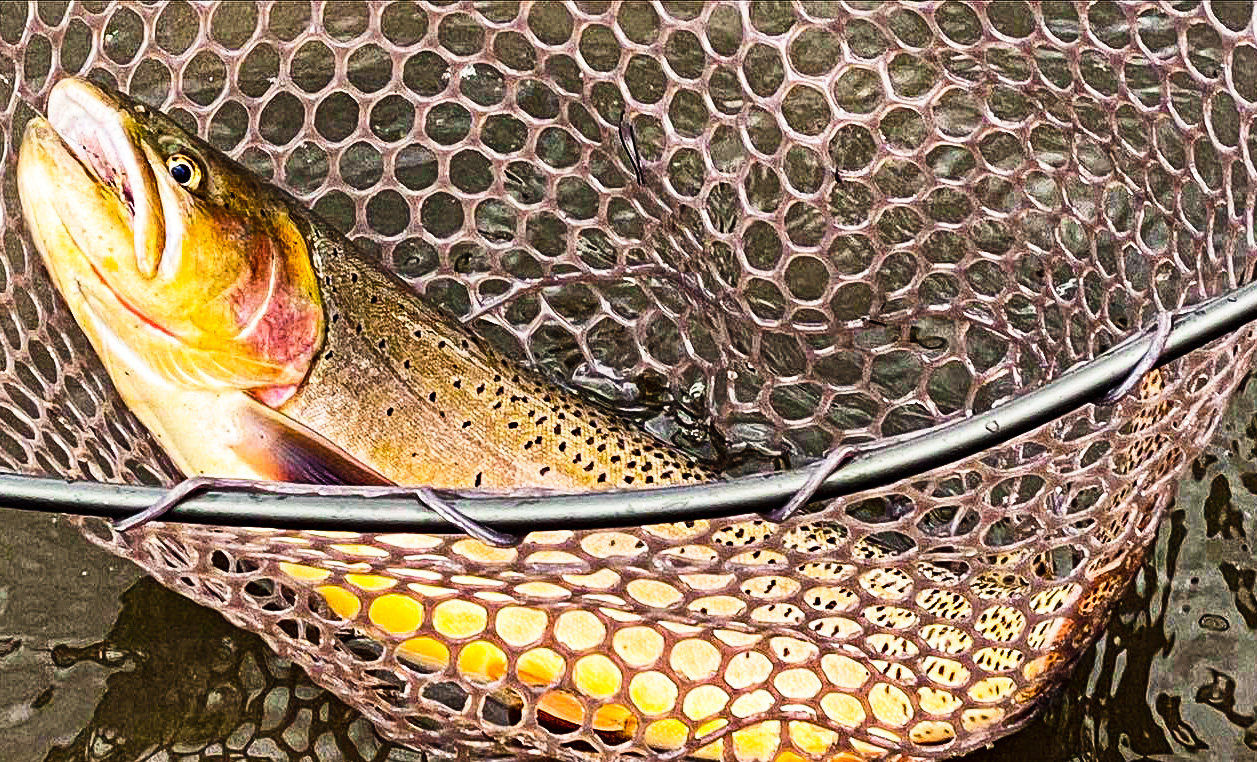
Hi, this is Dan Gigone from Sweetwater Fly Shop in Livingston, Montana. We’re right on the banks of the world famous Yellowstone River and around this time of year, late April into early May, we start getting a lot of phone calls, people just asking, are they here yet or when do you think they’ll be here? And what they’re talking about is what we call the Mother’s Day Caddis Hatch, which is a big caddis emergence that takes place in the spring prior to runoff on the Yellowstone River, on other Montana rivers and throughout the Rocky Mountains.
So what’s all the excitement? Well, the Mother’s Day Caddis emergence can be a true blanket hatch. There can be so many bugs on the water in the area, you think you could walk across the river on top of them. Sometimes that leads to really good dry fly fishing. Sometimes that can be a little frustrating because there’s just so many naturals for the fish to eat. But regardless, it’s just kind of a spectacular act of nature to see those many bugs emerging all at once and blanketing the river. The Mother’s Day Caddis Hatch can be some of the best dry fly fishing of the year, certainly of the pre-runoff spring. Sometimes there will be enough naturals that it will seem like every fish in the river is eating those on top and even the larger fish because they’re going to be able to get a lot of food quickly.
Let’s just talk a little more about the different life stages of the Mother’s Day Caddis. As I mentioned earlier, the larvae are case builders. In the case of the American Grannom, they tend to make cases out of small sticks. But when they are feeding, the head will poke out and the body of the larvae itself is a bright green. So it’ll look like there’s a bright green collar as a little bit of that bug protrudes out from the end of its case. The pupa, once they pupate, again, bright green body, but the rest will be kind of a dark gray or brown. And like I said, there’s legs everywhere. It looked like they just got out of bed. Those pupae swim to the surface, emerge as the winged adults. We think of caddis as having tent-shaped wings, that is, that have kind of folded in a tent shape over their body. In the American Grannom, right as they emerge, those wings are dark gray, but they become more translucent over time. And you see the picture there in the willows. That kind of is where they will retreat after they emerge. And so a good way to know whether there have been caddis emerging the day before is to go in the morning and look at the willows and see if you can find any just kind of hanging out there getting ready to mate and lay eggs.
It tends to be best near Livingston and upstream through the Paradise Valley. There are decent numbers downstream of Livingston, but kind of the closer you get to Livingston, the better. And Livingston, even downtown Livingston, in Sacagawea Park or wherever, there can be really good hatches. So something you could do even after work, run over there and see if you can get into some good dry fly fishing over there.
So where around here in southwestern Montana can you expect to find the Mother’s Day Caddis Hatch? Well, one spot,the lower Madison River below Ennis Lake, tends to have pretty good, sometimes really good, masticate hatches. I’ve had some really good days over there. And it tends to start over there a little earlier in the season than it does on the Yellowstone. In fact, as of today, March 29th, I think, 2024, we have heard some reports of good bug numbers over there on the lower Madison. Yellowstone River tends to start a little later. And at this point, I haven’t seen any bugs yet, but it could be any time now.
the hatch does tend to start downstream and then work its way upstream as the water warms and as things progress, a couple miles a day. So if there were bugs hatching two miles downstream yesterday, there could be a good hatch today two miles upstream. So the progression of the hatch, the larva, the nymphs are active right now. They’re moving around. They’re getting things ready to roll. Not a lot of folks will fish a caddis larva, especially like a cased caddis, but it’s certainly worth trying with that bright green collar right around now. They will pupate amongst the rocks here very soon. Some of those pupa get dislodged and will bounce along the bottom. And so you can certainly fish a deep emergent pupa pattern with good success prior to the hatch especially. Those people will swim pretty quickly to the surface when they’re ready.
And talk a little more about this later, but the trout will chase them up. But once they break through, the pupa break through that surface tension, then the exoskeleton will split. The winged adult will emerge. And it takes them a little while that when they come out, their wings are all crumpled up and they need to pump those full of fluid basically so they’re rigid enough to fly. So they will float on the water for a bit as they prepare to fly away. And then the winged adult will fly to the banks, usually, like I said, to willows or rocks, kind of hang out there and prepare to mate.
You’ll see the big mating flights in the evenings usually with swirls of almost like smoke of all the bugs hooking up, basically. And then the females will fly to the river, land on the water, and lay their eggs right down in the water and let them drift down to the bottom. At that point, they pretty much give up the ghost. And so you’ll have some spent caddis, essentially, that have already laid their eggs that will continue to be eaten by the bugs, or by the fish, rather.
And how big are they? Well, it kind of varies from fly to fly, but they’re around a 14 or 16 in size, depending on how bushy the pattern is and like that. Like I said, the natural has a very dark body. And so a dark olive or black even body on a lighter colored elk hair caddis or something like that is a good bet.
Like I said, we’ve got people already calling us asking, when do the bugs get here? Timing a hatch or predicting a hatch is as much an art as a science. There’s just so many factors. But one thing that seems to be a big factor in a lot of emergencies, and in particular this particular emergence, is the water temperature of the river itself.
So normally our kind of a rule is that once the river has peaked above 52 or 53 degrees for a few days in a row, that’s when you would start to expect to see bugs starting to hatch. Again, we’ve already had those kinds of temperatures, and now the water temperatures have dropped with cooler weather. And my guess is here on the Yellowstone that once next time that water warms up above the low 50s for a few days in a row, we’ll start seeing emergence down low, and then that emergence will progress upstream a couple miles a day. But there’s always the wild card of runoff as well, the start of runoff. If we were to get a bunch of really warm days in a row, then suddenly the river is going to be high and muddy and not going to be the best dry fly fishing experience. So it’s a little bit of a cat and mouse game or something like that.
When would you expect to see bugs on the water? Once that hatch does get going, kind of two different times:
- The emergence itself tends to be kind of early afternoon and you’ll just be fishing. There’ll be nothing. All of a sudden there are just bugs covering the water, all coming out at once.
- The other time when you can have good dry fly fishing is late in the evening. Those egg-laying flights that bugs swarm and mate and those females head to the river and land on the surface to lay their eggs and the fish will eat them then.
So kind of those two times, if you had to choose a time, it’d be one of those.
So you’ve got one day to fish the Yellowstone River during the midst of the Mother’s Day Caddis Hatch. What should be your strategic approach? Well, I’d like to talk about fishing from the bottom to the top. First thing you get there in the morning, there’s unlikely to be a lot of out-of-the-water bug activity. But those caddis larvae and pupa are active and they’re getting dislodged under the surface of the water. So I would probably start with either a larva pattern with a green collar as I’ve said or a deep pupa pattern because those pupa are being dislodged as they move towards adulthood. Something like Gary LaFontaine’s Beadhead Sparkle Pupa would be a good bet there.
Once you start seeing rises, chances are the first rises you see will be quite splashy. You even see fish come out of the water. Those fish are most likely chasing caddis pupa up from the bottom as those pupa swim to the surface and they overshoot sometimes. And that can actually be some of the best dry fly fishing of the hatch. Get an emergent pupa out there, either on or just below the surface. And those fish are actively chasing those bugs up. You can even make your emerger do some active stuff, twitch it and so on because those fish are expecting the bugs to be swimming up from the bottom.
Usually after a while, you start seeing some more subtle rises or at least not as splashy. You might even see some fish eating the adults on the surface. But still, I’d fish a dry fly, that’s great. But I would always have an emergent pupa as a dropper. In my experience, you’ll get as many, if not more, fish on that surface pupa as on the dry fly. As those pupa are struggling to get through the surface tension, they’re kind of an easy snack. So the fish will often seem to prefer those. But you can certainly catch plenty of fish on a pure dry fly as well.
With these big blanket hatches, like the Mother’s Day Caddis Hatch, it sometimes seems like there are just too many of the naturals on the water, both because it can be difficult to see which fly is yours when there are hundreds and thousands of caddis flies around it. But also, why would the fish pick yours when it’s got so many options? So there are a couple of things, tricks that I do:
- For my being able to see the fly, the visibility, something with a bright pink post, like a clown shoe caddis, or even a high-vis elk hair caddis to give you a little bright spot to find your fly.
- You can also try going with a larger fly than the actual naturals to help it stand out in a way for you, but also for the fish. It seems like sometimes if you just unmatch the hatch a little bit, that the fish see that difference from all the other bugs they’re seeing and actually that can encourage them to take the flies. Something a little bigger, even something gaudy and out of season, but then you could also then tie on as a dropper, a more realistic, natural, or look more like the natural. And that big gaudy fly can also serve as an indicator to let you know when a fish has taken the other kind of more realistic fly.
- Motion, we’ve all been taught to dead drift both nymphs and dries, but these caddis, and with a number of different species, they do move around. Like I said, the pupa swimming to the surface, which you can imitate by swinging a soft hackle or the classic leisingring lift, but really just giving it, you know, let dead drift the deep pupa or the larvae through the run, but when you get to the end, let it rise and swing across. And sometimes you get some pretty explosive strikes with that motion.
Adults as well, they’re generally just floating down the river, but they will skitter a little bit. They’ll move from side to side, and sometimes I think that can trigger a take. So just a little twitch every once in a while, give that dry fly some motion, and maybe that’s going to attract the attention of a hungry trout.
If you can, you want to try to fish that leading edge of the emergence. So like I said, it starts downstream, moves up a mile or two every day. The closer you can be to that first wave of bugs, the better, because the fish do, with that much food, they do become satiated and can, towards later in the hatch, can be a little more, not quite as interested in eating those bugs.
And don’t be afraid to keep fishing dry flies even after the hatch has passed your area by, as long as it’s not runoff yet. It’s not like the fish suddenly say, oh, there’s no more bugs, we’re going to stop eating them. They will continue to eat them even after the main hatch has progressed upstream.
Just a couple of parting thoughts:
As anglers, we tend to think of hatches or emergences as being about the fish that we might catch on dry flies. But I think it behooves us to take a step back and to wonder just what a spectacular natural event this is, that this much biomass is exploding from the river all at once, feeding not just the trout, not just the whitefish, but birds and other species, but still enough making it through to lay their eggs and repeat that cycle. If you’re in the midst of it, you’ll have bugs in your nose, you’ll have bugs in your hair, but just to kind of experience that kind of spectacular natural event is something that, to me, is as important as the fishing itself.
Also brings up what’s going to happen, what’s happening now and what’s going to happen in the future. Insect populations worldwide are crashing, and especially aquatic insects like caddis, like mayflies, like stoneflies. Hatches on average are starting sooner as climate change warms that water temperature sooner in the year, and we don’t know what kinds of effects that might have. But climate change, pollution, stream degradation, all big threats, and if we’re going to continue to have these amazing natural events, we’re going to have to pay more attention to some of these things that are troublesome in terms of the future of aquatic insects and trout fishing, frankly.
Thanks for playing along, and hopefully if you’re a local in the next week or two, you can get out and experience some of the amazing Mother’s Day caddis hatch on the Yellowstone River. Stop by at the shop, we’ll be happy to point you in the right direction, point out some flies. Get out there and experience one of the truly amazing spectacles of nature in our area!

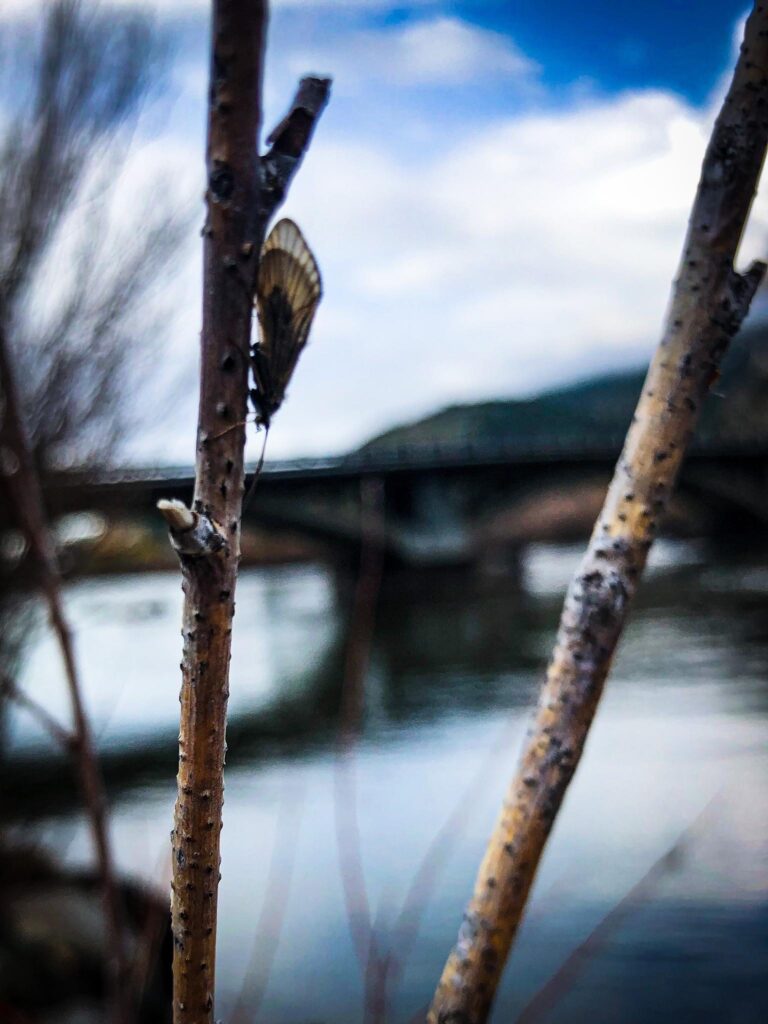
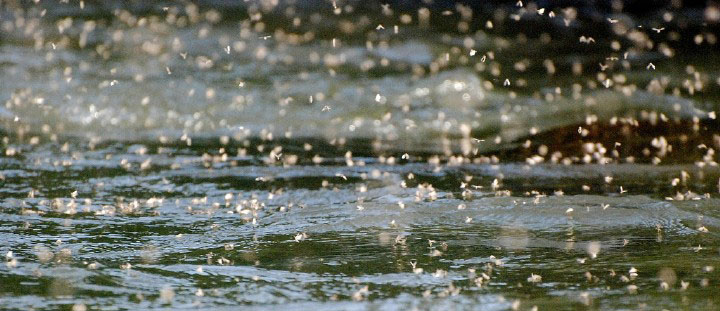
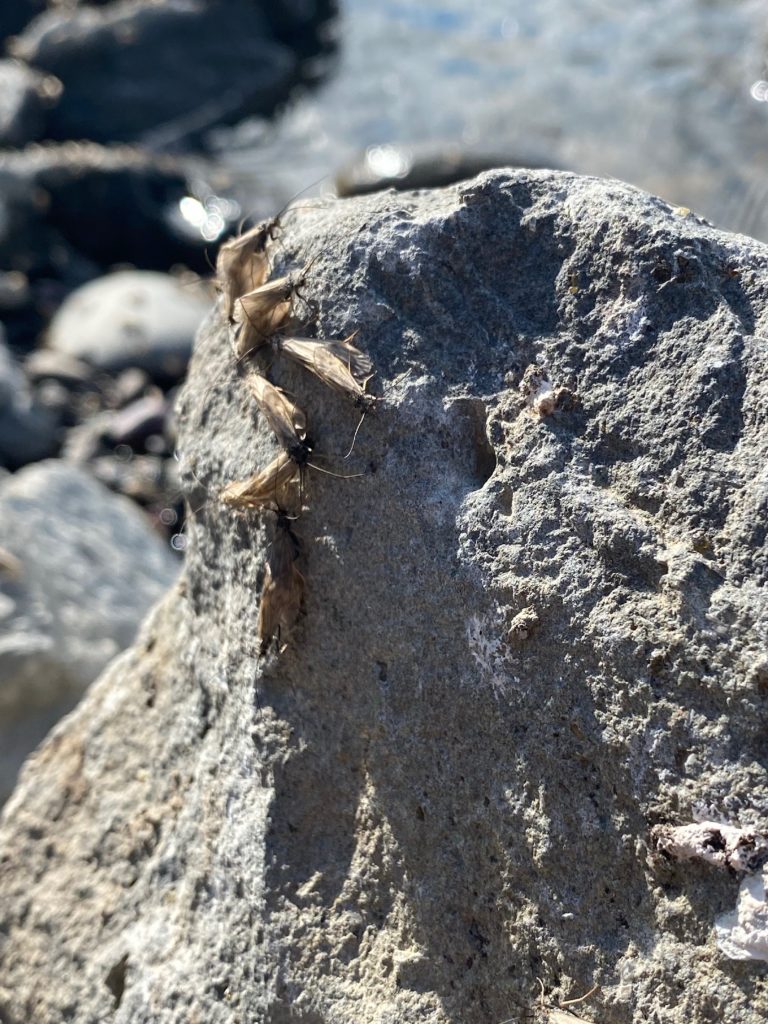
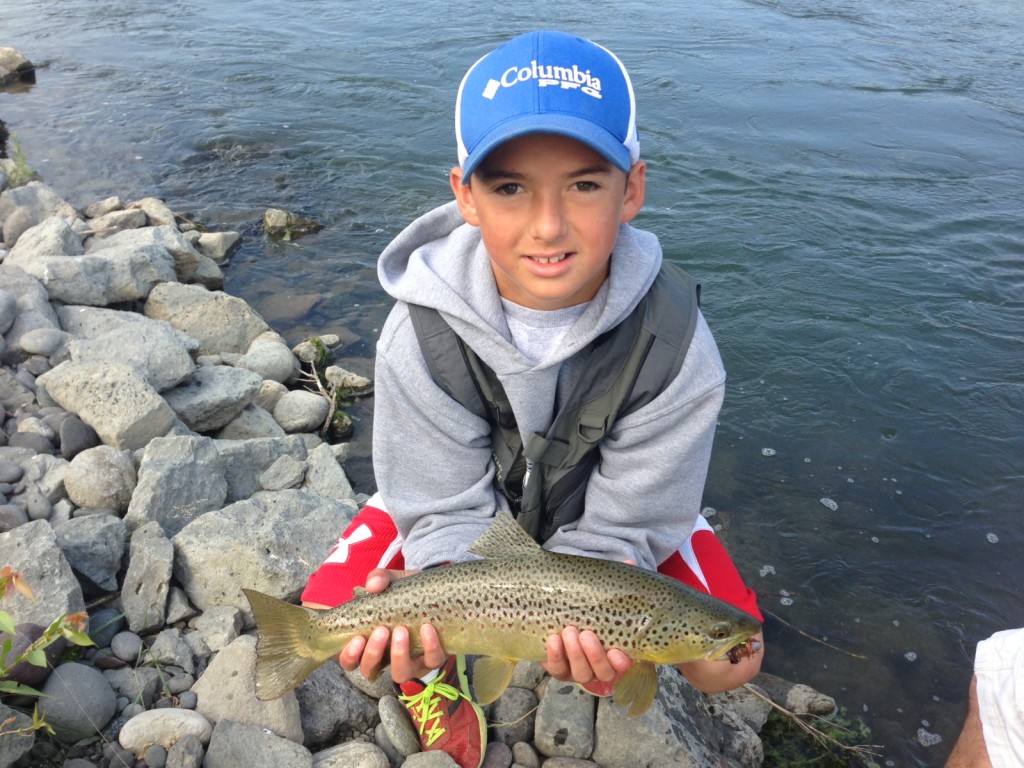

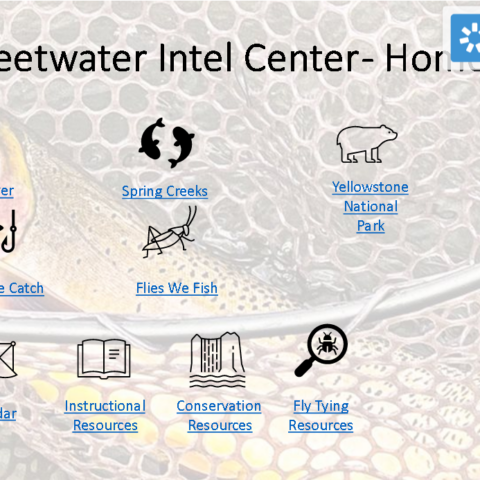
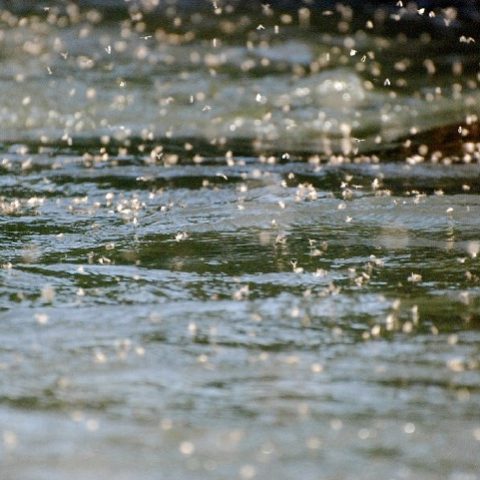

Leave a Reply
You must be logged in to post a comment.